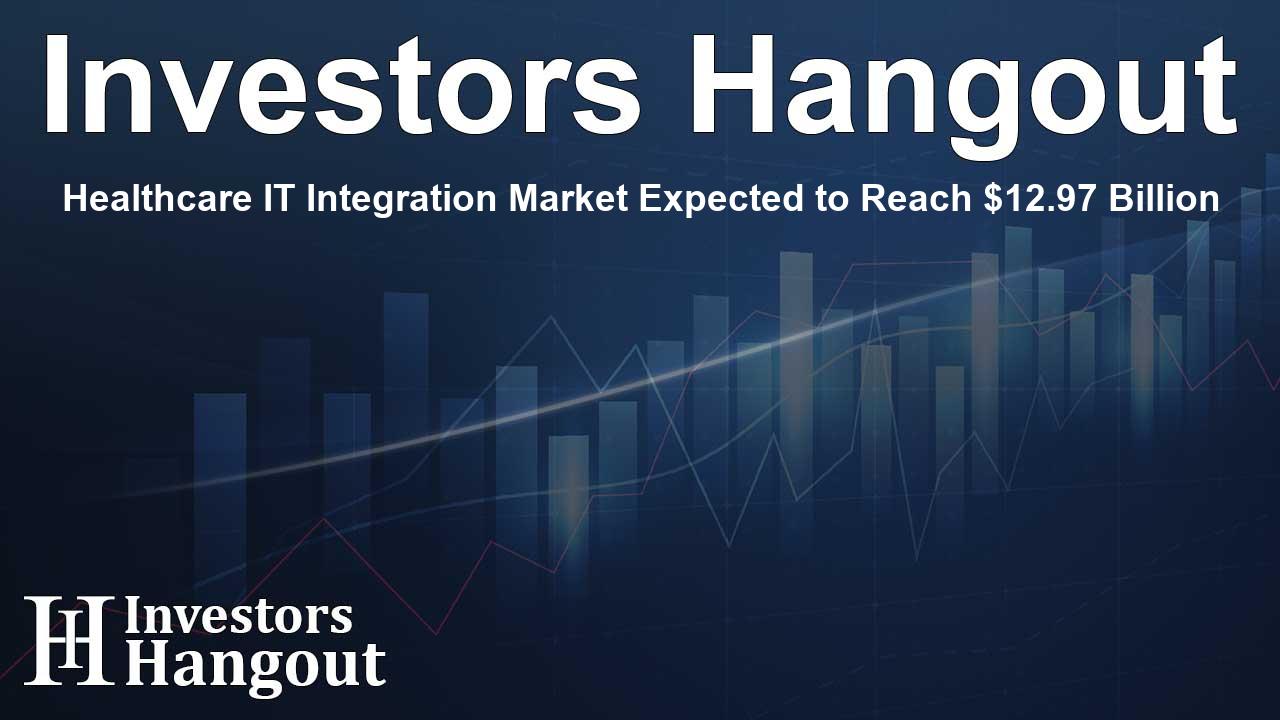Healthcare IT Integration Market Expected to Reach $12.97 Billion

Insights into the Healthcare IT Integration Market
The healthcare IT integration market is experiencing remarkable growth, with a valuation estimated at USD 4.43 billion in 2023 and a projection of USD 12.97 billion by 2032, reflecting a compound annual growth rate (CAGR) of 12.69%. This expansion is spurred by the increasing utilization of electronic health records (EHRs), the rise of telemedicine, and advanced AI-driven diagnostic tools aimed at enhancing patient care and data interoperability.
Understanding Market Drivers
The demand for healthcare IT integration continues to rise as healthcare providers look to modernize their operations and streamline workflows. This integration is not merely an enhancement but a necessity for effective data exchange among various IT frameworks including EHR systems, laboratory information management systems, and clinical decision support systems. As healthcare institutions adopt more sophisticated technologies, the importance of seamless integration becomes evident to improve operational efficiencies and lower medical errors.
Regulatory Compliance and The Shift to Value-Based Care
Recently, there's been escalating regulatory pressure aimed at achieving data interoperability, which is critical for successful patient care outcomes. As facilities transition to a value-based care model, integrated systems become indispensable for enabling comprehensive data analysis and coordinated care, thereby enhancing overall healthcare delivery.
Market Segmentation and Key Statistics
In 2023, the services segment had a dominant role, holding over 62.1% of the market. The rising popularity of specialist services is largely attributed to the need for seamless implementation of IT systems tailored to the healthcare industry. Additionally, hospitals were the largest consumers of these integrated IT systems, responsible for over 72.3% of the total market share.
Growing Influence of Chronic Diseases
The market's trajectory is heavily impacted by the growing prevalence of chronic diseases, such as hypertension and diabetes. These conditions represented a staggering 60-70% of global healthcare expenses in 2023, highlighting the critical role of healthcare IT solutions in continuous disease management and monitoring.
Emerging Technologies in Healthcare
Technological advancements have played a pivotal role in market development. The availability of cloud-based healthcare IT solutions is expected to surge by 25% year-over-year in North America, showcasing a strong preference for scalable technology that complements patient care.
Regional Insights and Market Dynamics
North America currently leads the market, capturing over 57.3% of the global share. The region’s high adoption of advanced healthcare technologies, coupled with stringent regulations for data interoperability, drives this trend. Conversely, the Asia Pacific market is anticipated to grow the fastest, propelled by increased healthcare investment and digital health technologies.
Recent Developments Shaping the Market
In recent initiatives, HealthPlix Technologies has collaborated with Google to improve healthcare accessibility, allowing patients to book appointments directly through its EMR software. Similarly, Ontrak, Inc. has adopted the Comprehensive Healthcare Integration (CHI) framework to enhance holistic care through integrated systems that address physical and behavioral health.
The Competitive Landscape
Notable players in the healthcare IT integration market include major companies like Infor, InterSystems Corporation, Cerner Corporation, and Epic Systems Corporation among others. These companies are at the forefront, providing various integration solutions aimed at improving operational efficiency and patient care outcomes.
Conclusion
As healthcare institutions increasingly recognize the importance of data interoperability and seamless technology integration, the healthcare IT integration market is poised for exceptional growth, with a promising future characterized by improved patient outcomes and operational efficiencies.
Frequently Asked Questions
What is the expected growth rate of the Healthcare IT Integration Market?
The Healthcare IT Integration Market is projected to grow at a CAGR of 12.69%, reaching USD 12.97 billion by 2032.
What factors are driving the growth of this market?
Key drivers include the increasing adoption of EHRs, telemedicine, and AI-driven diagnostic tools, along with regulatory pressures for data interoperability.
Who are the major players in the healthcare IT integration market?
Major players include Infor, InterSystems Corporation, Cerner Corporation, and Epic Systems Corporation.
How does market segmentation affect healthcare IT integration?
The segmentation between products and services allows providers to tailor their offerings, with services currently dominating the market share.
Which region holds the largest share in the healthcare IT integration market?
North America leads the market, accounting for over 57.3% of the global share, driven by high technology adoption and regulatory pressures.
About The Author
Contact Logan Wright privately here. Or send an email with ATTN: Logan Wright as the subject to contact@investorshangout.com.
About Investors Hangout
Investors Hangout is a leading online stock forum for financial discussion and learning, offering a wide range of free tools and resources. It draws in traders of all levels, who exchange market knowledge, investigate trading tactics, and keep an eye on industry developments in real time. Featuring financial articles, stock message boards, quotes, charts, company profiles, and live news updates. Through cooperative learning and a wealth of informational resources, it helps users from novices creating their first portfolios to experts honing their techniques. Join Investors Hangout today: https://investorshangout.com/
The content of this article is based on factual, publicly available information and does not represent legal, financial, or investment advice. Investors Hangout does not offer financial advice, and the author is not a licensed financial advisor. Consult a qualified advisor before making any financial or investment decisions based on this article. This article should not be considered advice to purchase, sell, or hold any securities or other investments. If any of the material provided here is inaccurate, please contact us for corrections.
